A multiplicity of experiences: challenges in documenting King County’s Latino Heritage
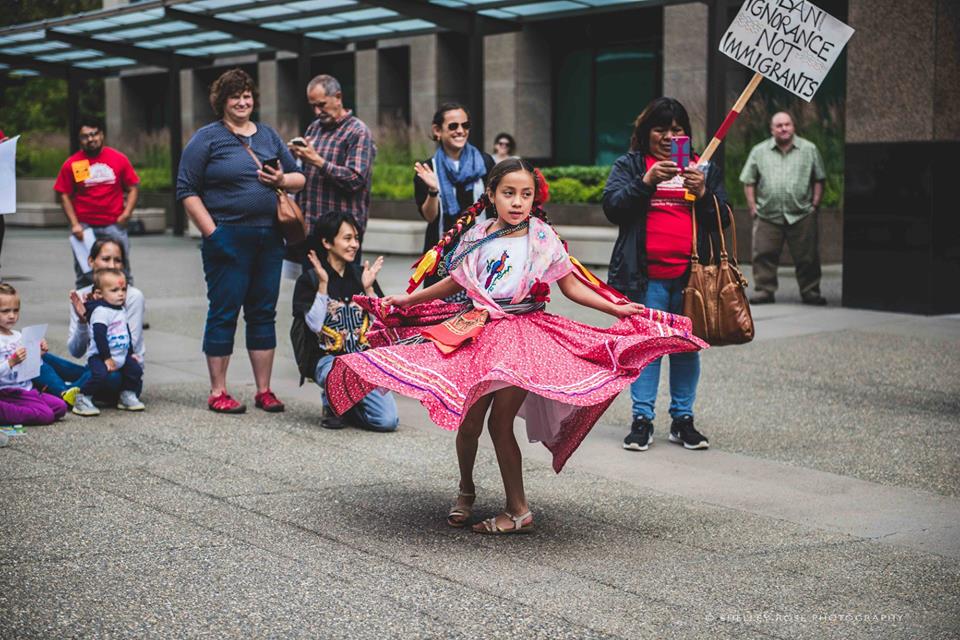
A dancer at Casa Latina. Photo by Shelley Rose Photography.
By Claudia Kiyama, Preservation Architect
Latino heritage in the State of Washington stretches back several hundred years, all the way to the 18th century Spanish exploration voyages that helped map the coast and gave us place names such as Orcas, Lopez, and San Juan de Fuca. However, historic sites associated with Latinos remain mostly undocumented in the state, and therefore largely left out of preservation efforts. In 2018, with a grant from the National Park Service and with support from the Washington Trust for Historic Preservation and other local and state agencies and institutions, a small multidisciplinary team was set up to research and document Latino heritage around the greater Seattle area, following a previous project in the Yakima Valley.
The Seattle area project was intended in part as a crowdsourced learning experience. We would learn from Latinos themselves what places were important to them. The idea was to conduct various oral histories from a diversity of Latinos, and from those conversations start identifying historic sites to survey. The first challenge came in representing at least some part of the multiplicity of Latino experiences. We wanted to come out with an array of sites that, at least partially, represented the vastness of the term “Latino.”
The term Latino, although widely used to homogeneously group a whole population, refers to an incredibly heterogeneous people from diverse walks of life and ancestries. Some Latinos identify themselves as Mexicanos, Salvadoreños, or Chilenos; some as Chicanos, some as Latinx, some as Americans. Some Latinos have landed in Seattle in recent years with no stops in between, while others were born in Washington State after their parents trekked the country, if not the whole continent to get here. Some found themselves in a new country when the border crossed their families generations ago. The Latino story is definitely not one single narrative repeated over and over again, as it is frequently portrayed. There is wide diversity within the Latino community. There are multiple variants such as ancestry, provenance, reason and moment of arrival to the US, immigration status, and aspirations that configure each singular experience and bring immense richness to Latino culture.
Intending to survey Latino heritage, therefore, is in no way a clear linear task. It should involve people from 20 countries and various degrees of immigration past. Since the survey was for historic sites, more recent experiences were not included in this study. However, the need for interviewing Latinos from different walks of life and backgrounds was evident from the start.
The more we talked to people, the clearer it became that we were dealing with two types of sites. One kind was the common places of daily life established by Latinos in Seattle over the past decades: shops and businesses, family restaurants, social clubs, community centers and neighborhood clinics. El Centro de la Raza, Sea Mar Community Health Centers, Jalisco Restaurant in South Park, and the Salvadorean Bakery in White Center are some examples. The other type are well acknowledged Seattle landmarks, already recognized by their relevance to other groups, that are also significant to the Latino community in Seattle. Places such as Franklin High School or the University of Washington campus have played an iconic role in the life of many Latinos. The survey of these sites involved uncovering a buried layer of their already documented story.
Other challenges included the lack of flexibility within current preservation standards and practices. Architectural integrity seems to be a fierce opponent of diversity. In reality, some structures have little architectural integrity and still are incredibly important to people. A restaurant can undergo several incarnations, from a taqueria to a pupuseria and back to a Mexican restaurant, and not only maintain, but grow its landmark status within a community. Although the good intention to accept different heritages exists, more needs to be accomplished in terms of really embracing, with full conviction, that architectural integrity doesn’t have to always be the closing argument. Part of the reason some communities are underrepresented is precisely because of the disconnect between procedural framework in place and the nature of the sites related to these communities. A big number of these are not grand works of art or possess high artistic values; they are however, the places where a community has created a life in this city. Sometimes, the story simply outweighs the physicality or longevity of a site.
I studied and started my work in historic preservation in my native Mexico. Working on this project felt like a coming home experience for me. Learning the history of Latinos in Seattle from the incredible stories people generously shared with us was a true honor. The warmth and ethic of hardwork so ingrained in Latino culture are ever present in Seattle. The contributions of the Latino community are extraordinary and inextricably intertwined with the history of Washington. We hope that this survey opens up further recording of oral histories, broader surveying across the city and State, and amps efforts to keep acknowledging the Latino heritage layer in already documented landmarks.
A special thanks to 4 Culture and the National Society of The Colonial Dames of America in the State of Washington for providing funding for the survey and the addition of the information to revisitwa.org.

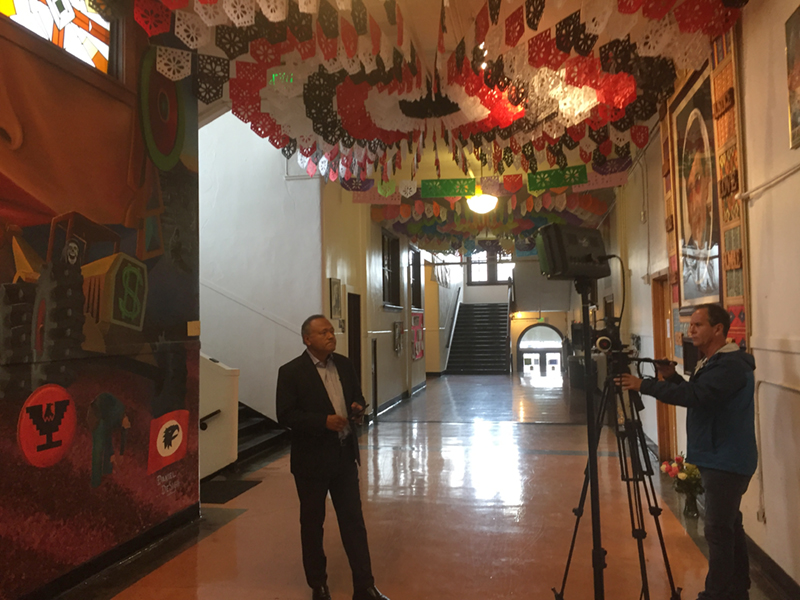
Enrique Cerna being recorded for RevisitWA site histories.
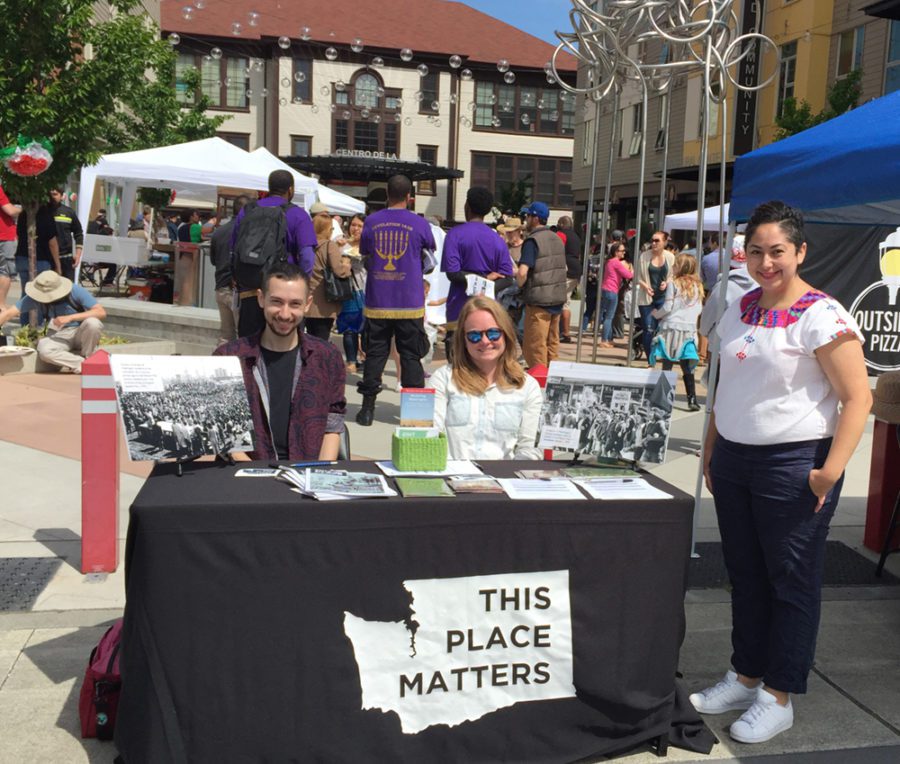
From left to right, Drew Gamboa of SeaMar, Julianne Patterson of the Washington Trust for Historic Preservation, and Claudia Kiyama doing outreach for the historic preservation survey at El Centro de la Raza’s Cinco de Mayo celebration in 2018.
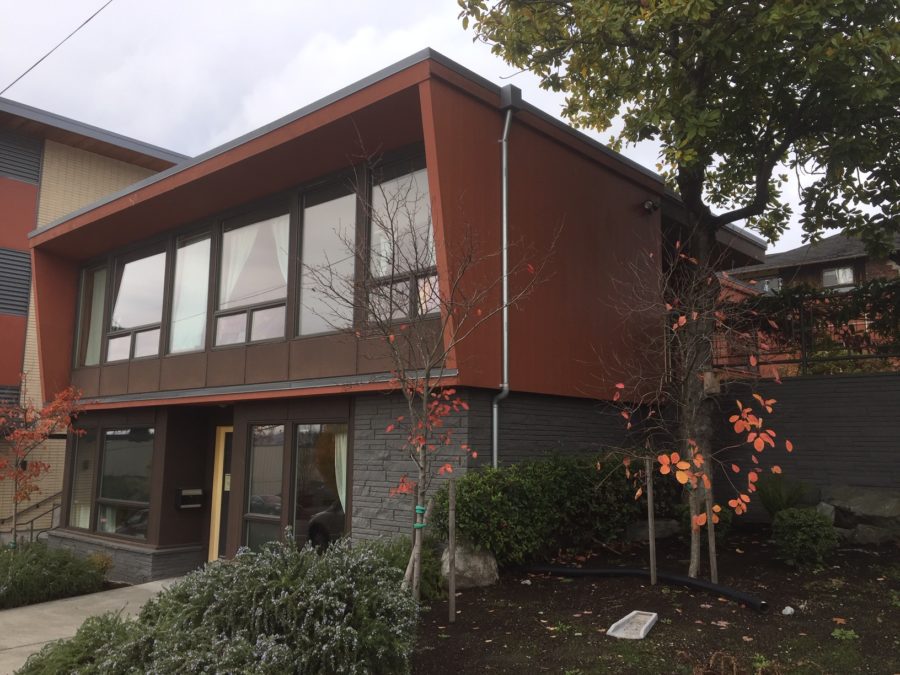
In 1994, Casa Latina was founded when large numbers of Latino workers began arriving to Seattle. What began as an attempt to organize day laborers has now grown to a vibrant, immigrant worker rights organization and community. In addition to day labor dispatch, they also provide English classes, job skills & safety trainings, domestic workers’ rights and women’s leadership training, and community organizing for almost 500 worker-members. Beyond the programs, it is a cultural center and a safe place, an anchor for immigrants new and not so new. In about 2010, Casa Latina moved into their current three-building campus in Seattle’s Central District.
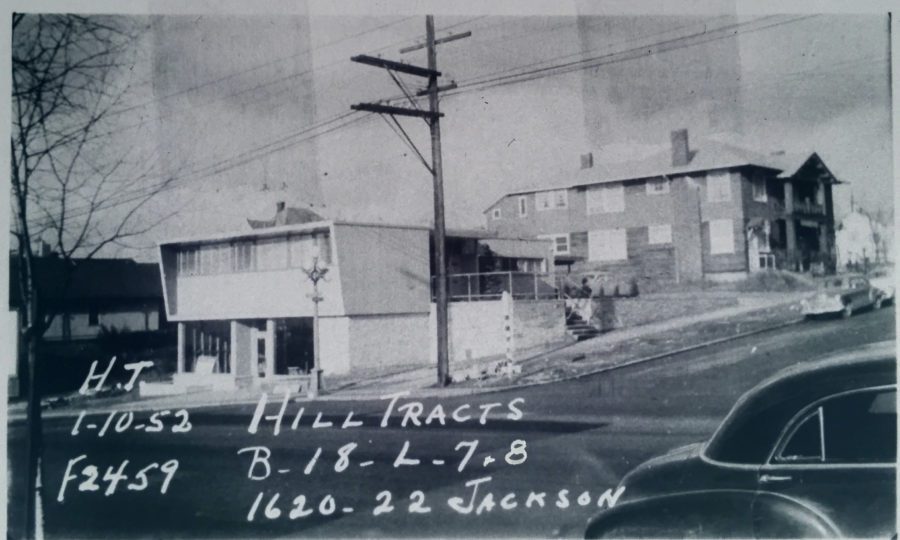
This building at the corner of 17th and Jackson, which is one of the three buildings which now serve Casa Latina, was constructed in 1951 as a medical clinic.
